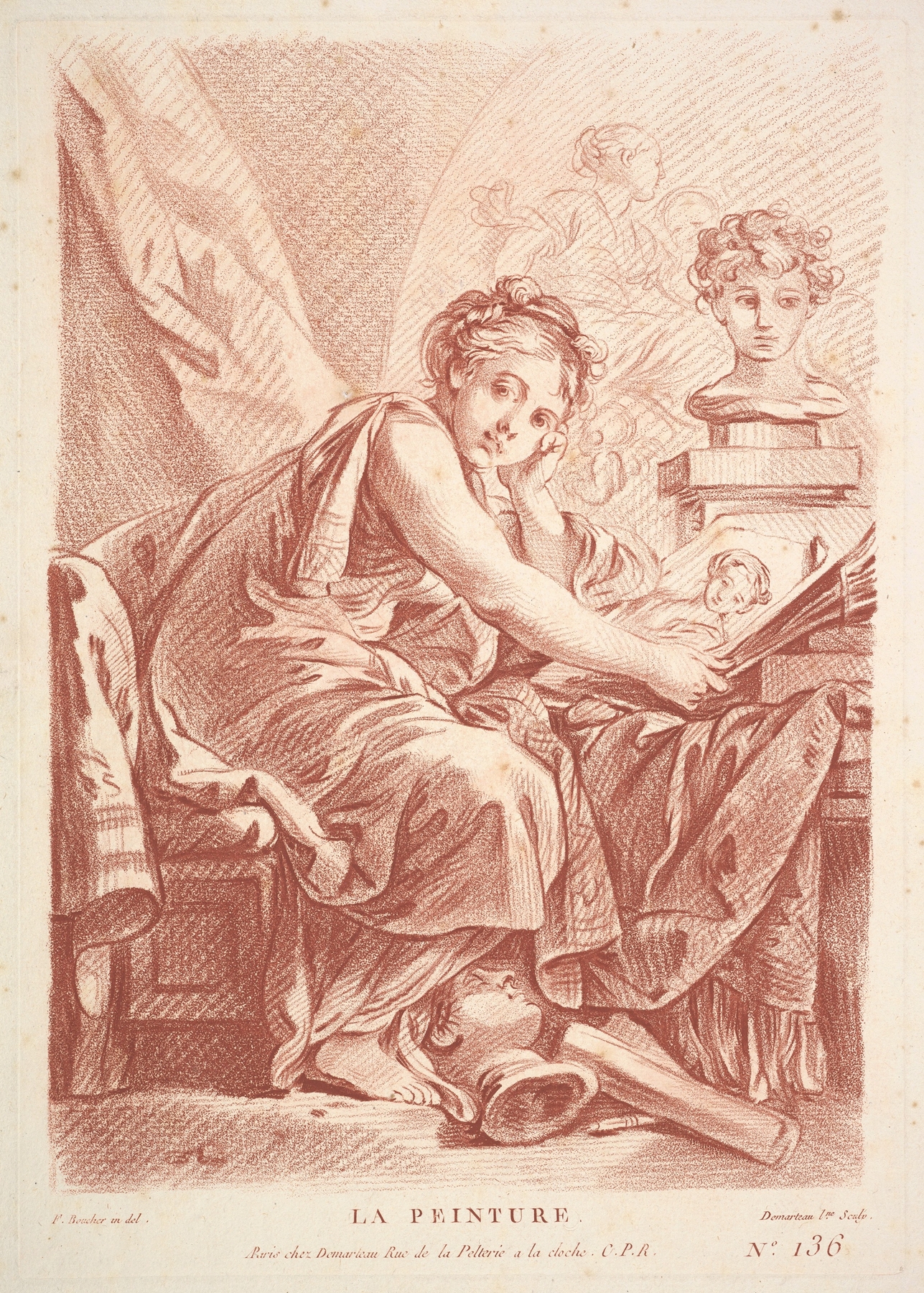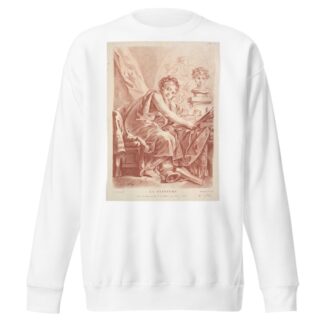Description
Painting by Gilles Demarteau the Elder printed on a T-Shirt
About the T-Shirt
Regular fit
Standard length, the fabric easily gives into movement
Casual wear
A classic, everyday option loved by our customers
Side-seamed
Constructed by sewing two parts together, creating a fitted look
The Unisex Staple T-Shirt feels soft and light with just the right amount of stretch. It’s comfortable and flattering for all. We can’t compliment this shirt enough–it’s one of our crowd favorites, and it’s sure to be your next favorite too!
- Solid colors are 100% Airlume combed and ring-spun cotton
- Ash color is 99% combed and ring-spun cotton, 1% polyester
- Heather colors are 52% combed and ring-spun cotton, 48% polyester
- Athletic and Black Heather are 90% combed and ring-spun cotton, 10% polyester
- Heather Prism colors are 99% combed and ring-spun cotton, 1% polyester
- Fabric weight: 4.2 oz./yd.² (142 g/m²)
- Pre-shrunk fabric
- 30 singles
- Side-seamed construction
- Tear-away label
- Shoulder-to-shoulder taping
- Blank product sourced from Nicaragua, Mexico, Honduras, or the US
Gilles Demarteau the Elder (1722-1776)
Gilles Demarteau or Gilles Demarteau the Elder was an etcher, engraver and publisher who was active in Paris for his entire career. He is one of the persons to whom has been attributed the invention of the crayon manner of engraving. He is recognized as playing an important role in the development of this engraving technique. He was one of the key reproductive engravers and publishers of the work of François Boucher.
Gilles Demarteau was born in Liège, at the time in the Prince-Bishopric of Liège (now Belgium). His father was a gunsmith, from whom Demarteau learned metal engraving and the goldsmith’s trade. He likely also studied drawing as he became one of the best draftsmen of his time. Still young, he joined in Paris his brother who worked there as a goldsmith. This was probably around 1748–1750. His brother worked for the Parisian engraver De Lacollombe, who is known chiefly for his designs and engravings of firearms ornaments. Gilles also joined the workshop of De Lacollombe as a ‘graveur-ciseleur’. In this capacity he not simply worked as an engraver of prints but also trained to decorate metal objects, in particular goldsmiths’ work.
In 1746 at the age of 24, he was admitted as a master engraver-carver on all metals. His first known works date to the mid 1740s and consist of sheets of ornaments engraved with chisels for decoration rifles, pistols or snuff.
In 1755 he settled permanently in the rue de la Pelleterie, near the Royal Palace. Here he lived until his death. He also set up his own engraving workshop in the Rue de la Pelleterie, which operated under the shop sign ‘à la Cloche’. The salon of the shop was decorated with paintings by François Boucher, Jean-Baptiste Huet and Jean-Honoré Fragonard and comprised a chimney piece, a fire screen with singeries, a now lost over-mantle including a large mirror surmounted by a floral painting and a second mirror hanging between two windows.
Gilles Demarteau used in 1756 goldsmith’s chasing tools and marking-wheels to shade the lines in a series of Trophies designed by Antoine Watteau. Jean-Charles François who was a partner of Demarteau further developed the technique and used it to engrave the whole plate. François engraved in 1757 three etchings directly on copper in crayon manner. He then used the technique to etch three plates using different-size needles bound together. Other people who contributed to this new engraving technique included Alexis Magny and Jean-Baptiste Delafosse. François and Demarteau separated ways in 1757 over conflicts relating to who was entitled to call himself the inventor of the new technique. In 1759 Demarteau was joined in his studio by Louis-Marin Bonnet, a former pupil and collaborator of François. Bonnet engraved in that same year his first plate for Demarteau.
Demarteau cut in 1759 his first plate in the crayon manner, which would be the first of about 300 plates after François Boucher’s drawings. Thanks to his superior drawing and engraving skills Demarteau was able to become the primary exponent of the crayon manner process in France. Demarteau’s prints were very popular because of their technical brilliance and low price. Denis Diderot mentions his work on several occasions in his reports on the Parisian Salons.
In 4 April 1767, Demarteau presented his first two-colour plates to the Académie française which gave him its approval. On 2 September 1769 he was admitted as a member of the Académie for his engraving of a print under the title Lycurgus. In this session, the designer Charles-Nicolas Cochin was also admitted for his design of that print.
The following year Demarteau was appointed engraver to the King (‘Graveur des Dessins du Cabinet du Roi’) and received a pension of six hundred livres (pounds). He replaced the engraver Jean-Charles François in this position.
The artists Jean-Honoré Fragonard, François Boucher and Jean-Baptiste Huet painted decorative murals in the salon of Gilles Antoine Demarteau’s house in the rue de la Pelleterie. The panels are now in the Carnavalet Museum in Paris.
His nephew Gilles Antoine Demarteau (also referred to as ‘Gilles Antoine Demarteau the Younger’) (1756-1802) became an engraver and took over his uncle’s workshop. Demarteau collected a large number of drawings of prominent draughtsmen of his generation, the majority of which were inherited by his nephew and sold at auction on the death of his nephew in 1802.






Reviews
There are no reviews yet.